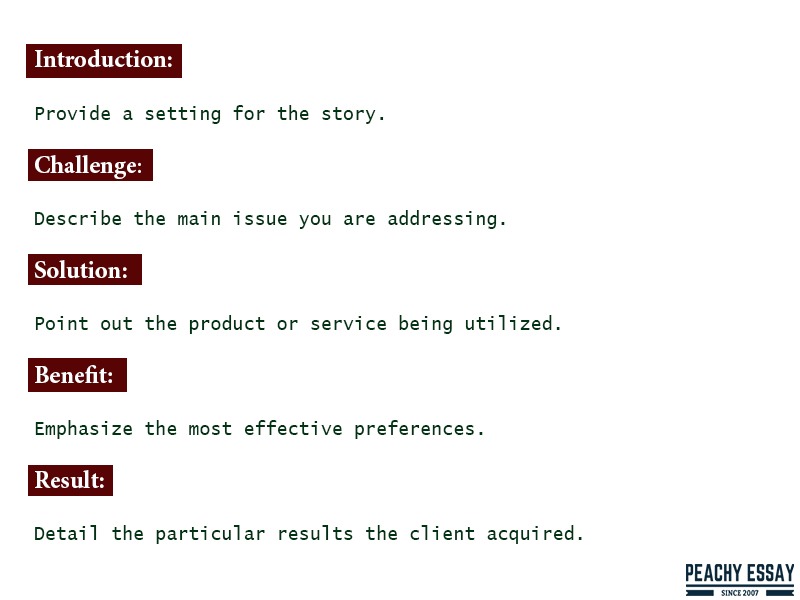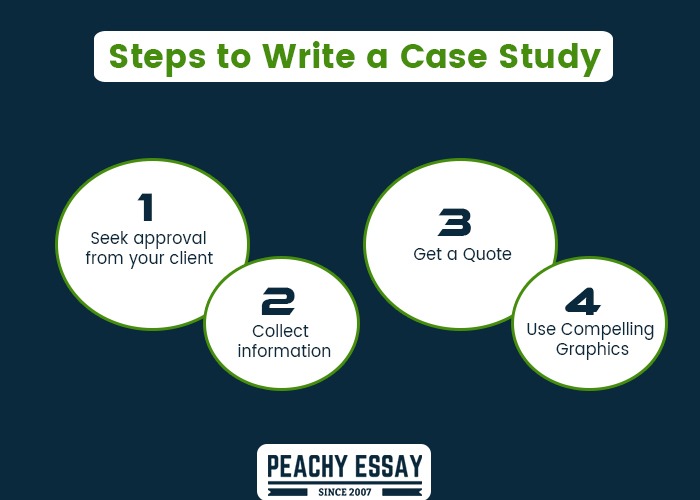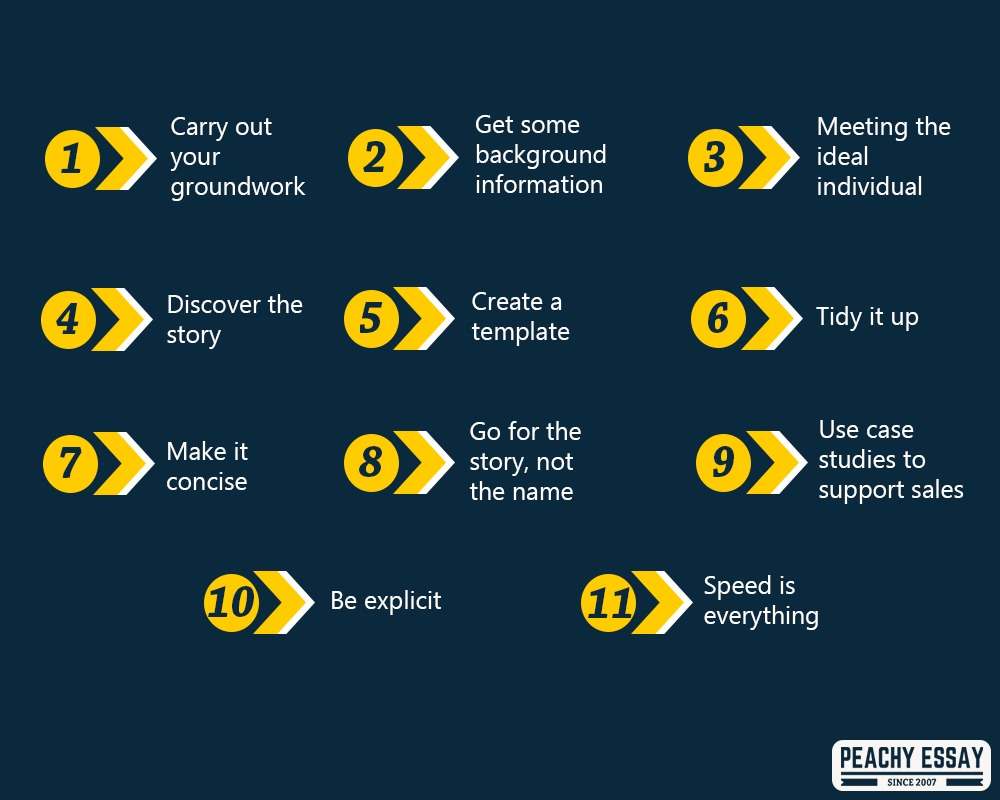Marketing departments have utilized case studies for quite some time. However, despite the popularity of marketing case studies and their impact, most of them are dull, exhausting, and forgettable.
What Is a Case Study?
A case study goes about as an account, highlighting real circumstances where certain items or services are utilized in a manner that exhibits their worth. They are a special sort of thought leadership content that brands can use in marketing to direct their audience to the choice phase of their customer’s journey. Connecting with case studies walk possibilities through how a serious client identified a particular problem area, begun utilizing your item or services, and defeated that trouble spot while receiving extra rewards.
Case studies are accounts that include certifiable circumstances or employments of items or services to exhibit their worth. An elegantly composed case study will follow a client as they characterize an issue, determine a solution, execute it, and receive the rewards.
Case studies offer readers the capacity to see a circumstance from the client’s perspective from start to finish.
Advertisers love utilizing “storytelling” to depict their collateral. Everything is a story if advertisers are to be accepted.
Nonetheless, the storytelling name most unquestionably does apply to case studies since stories are actually what case studies are.
Case studies are independent tales about how a serious client defeated their issues by utilizing your products or services. Much the same as a story, great case studies have a start, a center, and an end, just as a hero – your client – conquering an issue and accomplishing their objective, much the same as the main character of a story.
Before you finish a case study, the reader ought to have the option to picture themselves as the legend of their own story. They ought to have the option to identify with the issues of your highlighted client and see themselves accomplishing their own objectives by utilizing your product or service.
Case studies don’t press releases. Despite the fact that case studies can be utilized to accompany new product launches, they are not merely vehicles to discuss new items.
Why Create Marketing Case Studies?
Case studies may not be as attractive as a viral blog post, and accordingly, they’re regularly neglected for other content formats. This makes one wonder – why create marketing case studies? The appropriate response is because they’re truly successful.
Why Case Studies Are Important
An advertising case study is perhaps the most compelling content in your sales funnel.
It’s the ideal method to control individuals into and through the choice stage when they have the ideal choices spread out on the table, and they’re prepared to confound through that last choice.
Along these lines, case studies are extraordinarily valuable as the lower part of the funnel content.
How Long Should a Case Study Be?
Good case studies should be brief enough to occupy a little space. In the best examples, your reader can understand the single main idea of each page in a short paragraph or two.
Each detail should build on the next, so they’ll continue pushing ahead until the end without getting distracted.
Where Should I Put My Case Studies?
Anyplace you feel like!
Preferably, you ought to put case studies someplace on your site, so new leads going to your site have the occasion to see precisely how your business is performing.
Regardless of whether it’s an online case study or a PDF adaptation, making your victories accessible to the general population can demonstrate exactly how significant your endeavors are.
In addition, ensure each individual from your business group approaches your case study so they can utilize them as sales collateral to send to prospects and opportunities!! A short PDF connection to a business email can be extremely persuading.
The Best Case Study Format
How to Write a Case Study
Here are the steps for writing a case study
-
Seek approval from your client
This initial step is critical in light of the fact that it sets the design for your whole case study.
If your customer or client gives a go-ahead to utilize their name and data, you can add as much detail as you need to feature who they may be, what you caused them to do, and the outcomes it had.
Yet, if they would prefer to stay mysterious or need you to leave out particular details, you’ll need to figure out how to keep your data more generalized while as yet clarifying the effect of your endeavors.
-
Collect information
Like any great story, a promoting case study has a start, center, and end. Or on the other hand, you could consider it “previously, during, and after.”
Previously: The Problem
Your case study will consistently open by introducing an issue endured by one of your customers.
This piece of the investigation builds up what’s in question and presents the characters – your organization, the customer organization, and whichever individual decision-maker representing each side.
During: The Solution
When you characterize the issue, the subsequent stage presents your contribution, which fills in as the response to the issue.
Your product or service is, undeniably, the saint of the story. It catalyzes the change, which you describe regarding your highlights, advantages, and various differentiators.
After: The Result
In the last part, you highlight the “happy ending” achieved by your solution.
Getting back to the “stakes” you set up at the very beginning, you expand how much better things are because of your intervention. You want prospects to imagine they will be enjoying that level of accomplishments.
-
Get a Quote
Obviously, an investigation of two companies isn’t exceptionally intriguing all alone. The best case studies exemplify the protagonists, including the merchant and the customer organization, by having a lot of quotes used all through the whole story.
Normally, the business issue to be addressed is the large, bad villain, so you need the customer to say something regarding that issue: How complex it is, how tackling it would mean, and what not settling it would cost.
Then, as the situation turns around, testimonials become essential.
Normally, the longest, most earnest tribute should come from the top leader. However, you should mean to incorporate a gleaming statement from a wide range of stakeholders – speaking to the full cast of “characters” who may be settling on agreement purchasing choices around your solution. Avoid using a testimonial or quote if your case study is anonymous.
-
Use Compelling Graphics
A case study isn’t a white paper: You shouldn’t walk through page after page of plain text.
Truth be told, the absolute most impressive case studies set up their own distinctive, designs weighty style – looking significantly more like an infographic, or even a magazine, than conventional B2B advertising insurance.
Shading blocks, solid differentiation, high rise photography, and saint shots are for the most part on the table with regards to case studies. The more information you need to pass on, the more innovative you ought to be in introducing it so it tends to be perceived initially.
Read more: Guidelines and Steps for Writing a Coursework
How to write a case study as an effective call to action
-
Carry out your groundwork
Comprehend the product or service being sold and research the organizations on the two sides of the deal. This can be as basic as perusing the ‘About Us’ segment on an organization site, or their organization news page. You need some setting for the arrangement you’re expounding on.
-
Get some background information
Attempt to get hold of the individual who was on the ground and made the deal and get them to mention to you what occurred. Get some information so when you address the customer you’re not their time with obvious questions.
-
Meeting the ideal individual
The genuine story will come from the individuals really associated with acquisition, usage, and client relations. Abstain from meeting advertising or PR individuals, as they will just advise you a repackaged story, which will sound empty when you review it. You need a genuine client, ideally a customer of your item. Preferably, they have the position to support it, as well.
-
Discover the story
This is the core of the case study. There must be a story: a previous struggle, a journey to improve, and a current benefit. This doesn’t generally mean benefits. It very well may be improved employee retention, saved time, or a new business model. The emphasis is on what makes a difference most to the individual you meet. Furthermore, ensure you recount the genuine story – no swelled figures.
-
Create a template
When you have your essential story you can construct a structure. Most case studies fall into the organization’s life story, challenge, cycle, and advantages. Structures are there to underscore the story, not shackle it. Change it to the story and give yourself four or five subheadings.
-
Tidy it up
Try not to utilize too many promoting phrases or clichéd product clarifications – keep it human, yet ensure you are alluding to products effectively. Keep the story exact. What’s more, make certain to incorporate specific points.
-
Make it concise
A case study shouldn’t be longer than 500-750 words. Anything more than that will make people not to read it. Cut out redundancy, abbreviate statements, and ensure all that you compose is crucial to the story.
-
Go for the story, not the name
Most advertising individuals desire the legend case study that has a major brand acknowledgment factor. Actually, these folks once in a while need to give case studies and, if they do, they revamp everything and set aside a long effort to support it. Better to locate the willing client with a decent story.
-
Use case studies to support sales
In the event that a case study has a decent story – ‘our customer cut expenses by 25 percent’ – use it to show potential clients how they can do likewise. Organize case studies on your site by benefit or subject as opposed to the organization name, so that sales reps can locate the correct story when they need it.
-
Be explicit
Details matter. In addition to the fact that they make the case study more dependable, yet they additionally answer the reader’s inquiries.
-
Speed is everything
Case studies have a short half-life. Case studies have a short half-life. Technology moves on, and organizations change. In a perfect world, a decent case study should require seven days from the main contact to approval. If it takes longer, it builds the danger that the case study champion will lose interest. It ought to be a crescendo, not a perpetual low murmuring.
What to do when a case study goes wrong?
You will invest a ton of time and energy into your case studies, to make an instrument that you can utilize repeatedly with your business. Now and then, being so profoundly engaged with this process doesn’t empower you to be unbiased about the nature of your work.
Examples of excellent case studies
- LinkedIn Marketing Solutions: Nori Copywriters
Nori Copywriters, looking for excellent leads, turned to LinkedIn Marketing Solutions to target promoting experts in small to medium-sized organizations. Focusing on them with digital books, online classes, and how-to guides. Sponsored organic content showed up in individuals’ LinkedIn feed.
The outcome: 200 percent a more significant number of leads within their target audience than efforts on other platforms.
- Bright Edge: Stanley
In 2015, Stanley combined two separate brand web properties into one website. The cycle is expected to moderate traffic interruption, improve traffic, and increase organic search results.
The outcomes: Nearly 40% of keywords Stanley positioned for were on the first page of organic results. The organization created a 100 percent lift in income on account of support from the Bright Edge platform.
Top Tips for Writing a Case Story
- Involve the client
A few customers will avoid taking an interest and others have firm arrangements against them. However, some clients will take it positively when considered as case studies.
- Identify the customer
This is the best way of enhancing credibility in using case studies. Indeed, there are a few conditions where you can’t for moral or legitimate reasons. However, for some circumstances, it is conceivable. What’s more, when you can, it is useful.
- Utilize a quote
Getting an immediate quote from the customer is another incredible method to add trustworthiness and validity to your case story.
Additionally, consider including a quote from the expert for your firm that worked on the customer’s undertaking. This makes the case study appear to be more substantial and simpler to relate to.
- Include keywords in the title and body
Analyze the keywords of your case story’s point and incorporate them when you are composing. This will help web indexes discover the case story and spread the word. Incorporate your recognized keyword or keyword phrase both in the title of the case story and 2-3 times in the text.
Some regular keywords incorporate the name of the customer’s organization and the idea of the service you provided.
- Recount a story
Great stories have a start, middle, and end. They additionally have a battle against the chances and a defining moment. In the event that it is excessively simple, there is no tension or suspense. Will it work or not?
While we are not recommending transforming your case stories into writing, a tad of old-style narrating will go far toward expanding reader interest and commitment.
Clarify the customer’s difficulties and why your expert services firm was an ideal choice for their requirements. Describe how you helped the customer and attempt to illustrate what it resembles to work with your firm. What’s more, show results that you were able to deliver on your promises.
- Use numbers
Numbers add validity in manner words just can’t. They can be valuable in depicting the size of a test, the cycle you utilized, and, obviously, the outcomes you accomplished. Try not to be concerned if you don’t have perfect documentation. Indeed, even a couple of numbers help.
- Use symbolism
Frequently neglected, this is an extraordinary method to convey a setting or give you a snappy vibe for a customer. While most expert services don’t handily loan themselves to an image of the administration, there are different other options.










